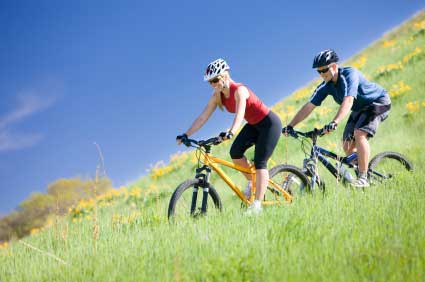
Physical activity for teenagers(5 to 18 age groups)
To maintain a basic level of health, children and young people aged 5-18 need to do: - At least 60 minutes (1 hour) of physical activity every day, which should be a mix of moderate-intensity aerobic activity, such as fast walking, and vigorous-intensity aerobic activity, such as running.
- On three days a week, these activities should involve muscle-strengthening activities, such as push-ups, and bone-strengthening activities, such running.
- Many vigorous-intensity aerobic activities can you meet your weekly muscle- and bone- strengthening requirements, such as running, skipping, gymnastics, martial arts and football.
Examples of activities that require moderate effort for most young people include:
Don't sit for too long
Children and young people should minimise the amount of time they spend sitting watching TV, playing computer games and travelling by car when they could walk or cycle instead.- walking to school
- playing in the playground
- skateboarding
- rollerblading
- walking the dog
- riding a bike on level ground or with few hills
- pushing a lawn mower
What counts as vigorous-intensity aerobic activity?
Examples of activities that require vigorous effort for most young people include:
- playing chase
- energetic dancing
- aerobics
- running
- gymnastics
- playing football
- martial arts such as karate
- riding a bike fast or on hills
What counts as muscle-strengthening activity?
Healthy weight
- Children and young people who are overweight can improve their health by meeting the activity guidelines, even if they don’t lose weight.
- To reach a healthy weight, they may need to do more than the recommended 60 minutes of activity a day and make changes to their diet.
Examples of muscle-strengthening activities suitable for most young people include:
- games such as tug of war
- rope climbing
- sit-ups
- push-ups
- swinging on playground equipment or bars
- gymnastics
- resistance exercises with exercise bands, weight machines or hand-held weights
- rock climbing
What counts as bone-strengthening activity?
Bone-strengthening activities are those that have an impact on the bones. They help bone growth and strength.
Examples of bone-strengthening activities suitable for most young people include:
- games such as hopscotch
- hopping, skipping and jumping
- skipping rope
- running
- sports such as gymnastics, football, volleyball and tennis









0 comments:
Post a Comment
Thanks for visiting, please drop a message if you liked it or you have some suggestions. So that we can improve and provide you better services.